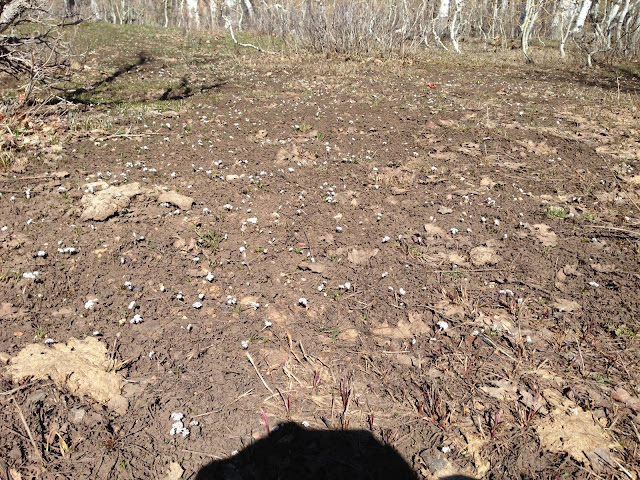 |
| Orogenia linearifolia |
One of them is Orogenia linearifolia, commonly known as Indian potato. Plants for a Future gives this little spring bloomer 4 out of 5 stars for edibility, so this should be worth trying. The flowers are a small cluster of tiny white flowers, in a compound umbel (if you look at the bottom of the cluster). The flower cluster is lopsided, with the rays on one side longer than the other side. The leaves are once to thrice ternate, with the segments long and narrow; they would look very grass-like if they weren't divided into threes lower down. There is also a scarious sheath around the base of the plant. On one of my trips, snow had fallen the day before, and there was still a thin layer left over a grassy area where I was looking for them. Finding small white flowers with grassy leaves among grass and snow was a challenge to one's observational skills.
The root, which is the part we are interested in eating, is a round corm, a little bumpy, and usually only about a half inch in diameter. This is pretty small if you are looking for a meal, but the good news is that they are close to the surface, and very easy to dig up. I could not pull it up without a little digging, but loosening the dirt next to it with any old stick and pushing up from below a bit is enough to bring it to the surface.
The roots were easy to clean up at home in the sink. The sink sprayer washed the dirt off easily, even though the light brown skins may look a little like dirt still. Raw, they were rather bland, but not bitter at all. But after boiling in water for ten minutes (no changes), they became starchy and very tasty. Add a little butter and salt to go along with it, especially if you cut open the little balls to let the butter get inside, and you understand why these would be compared with potatoes. It is possible to peel the skin off and just eat the white inside, but they are so small, I didn't think it was worth the effort or changed the taste enough to matter.
Below is a picture of a largish root. Most are about half this size.
These are among the first plants to emerge in the spring. They are small plants, so they need to finish their life cycle before the larger plants overshadow them. The melting snow was a few yards behind me when I took the picture below. All the white spots in the field are orogenia linearifolia flowers, and nothing else has starting growing yet.


No comments:
Post a Comment